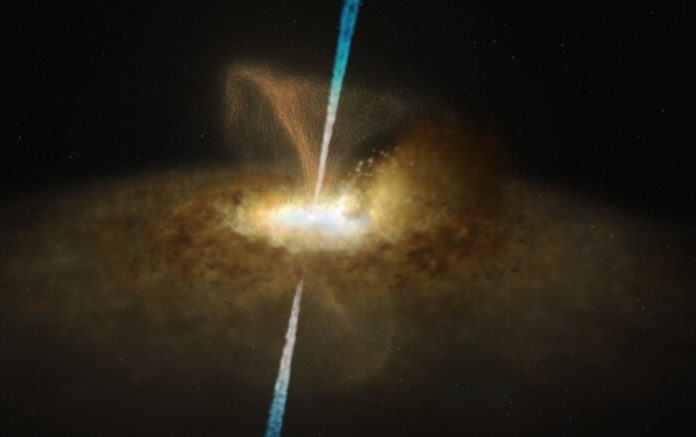“The real nature of the dust clouds and their role in both feeding the black hole and determining how it looks when viewed from Earth have been central questions in AGN studies over the last three decades,” says the study author.
The Very Large Telescope Interferometer (VLTI) of the European Southern Observatory (ESO) has discovered a cloud of cosmic dust at the center of the galaxy Messier 77 that conceals a supermassive black hole.
The discoveries back up predictions made more than 30 years ago, and they provide scientists with fresh information on “active galactic nuclei,” some of the brightest and most intriguing objects in the cosmos.
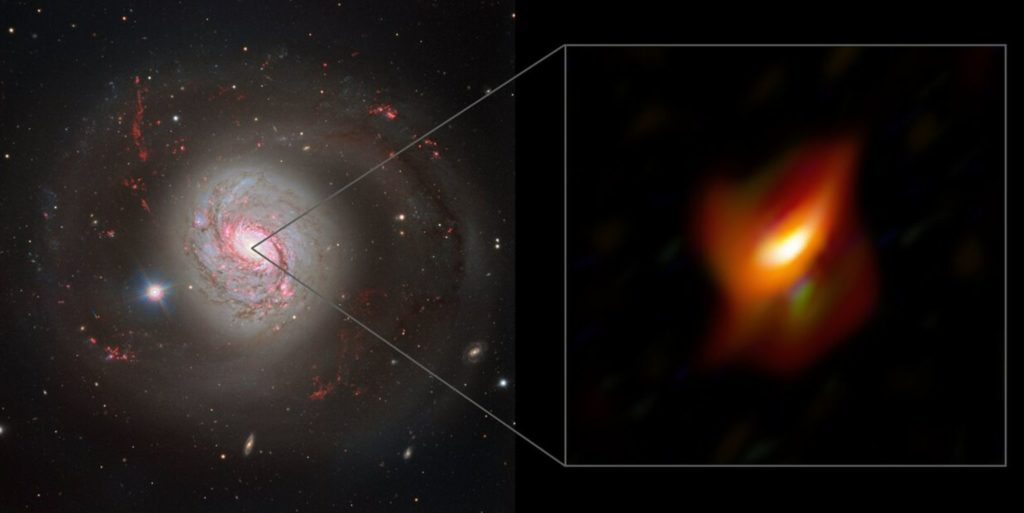
AGNs are very intense sources driven by supermassive black holes that can be found at the center of some galaxies. Large amounts of cosmic dust and gas are consumed by these black holes. This material spirals towards the black hole before being swallowed up, releasing massive amounts of energy and often outshining all of the galaxy’s stars in the process.
AGNs have piqued the interest of astronomers since they were first discovered in the 1950s. Now, thanks to ESO’s VLTI, a group of researchers led by Violeta Gámez Rosas of Leiden University in the Netherlands has taken a significant step toward understanding how they work and how they seem up close.
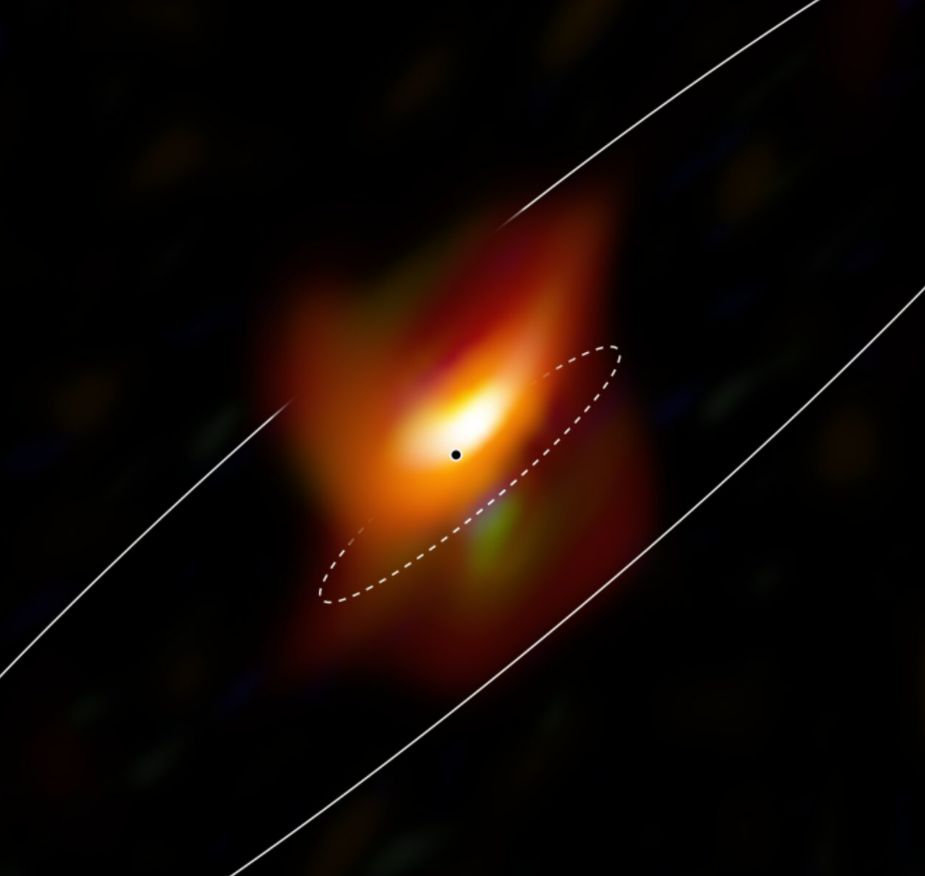
Gámez Rosas and her team discovered a thick ring of cosmic dust and gas hiding a supermassive black hole by performing extremely detailed measurements of the center of the galaxy Messier 77, also known as NGC 1068. This discovery adds to the support for the Unified Model of AGNs, which has been around for 30 years.
Different types of AGN are known to astronomers. Certain AGNs, for example, emit bursts of radio waves while others do not; some AGNs flash brilliantly in visible light while others, such as Messier 77, are less so. Despite their peculiarities, all AGNs, according to the Unified Model, have the same basic structure: a supermassive black hole surrounded by a thick ring of dust.
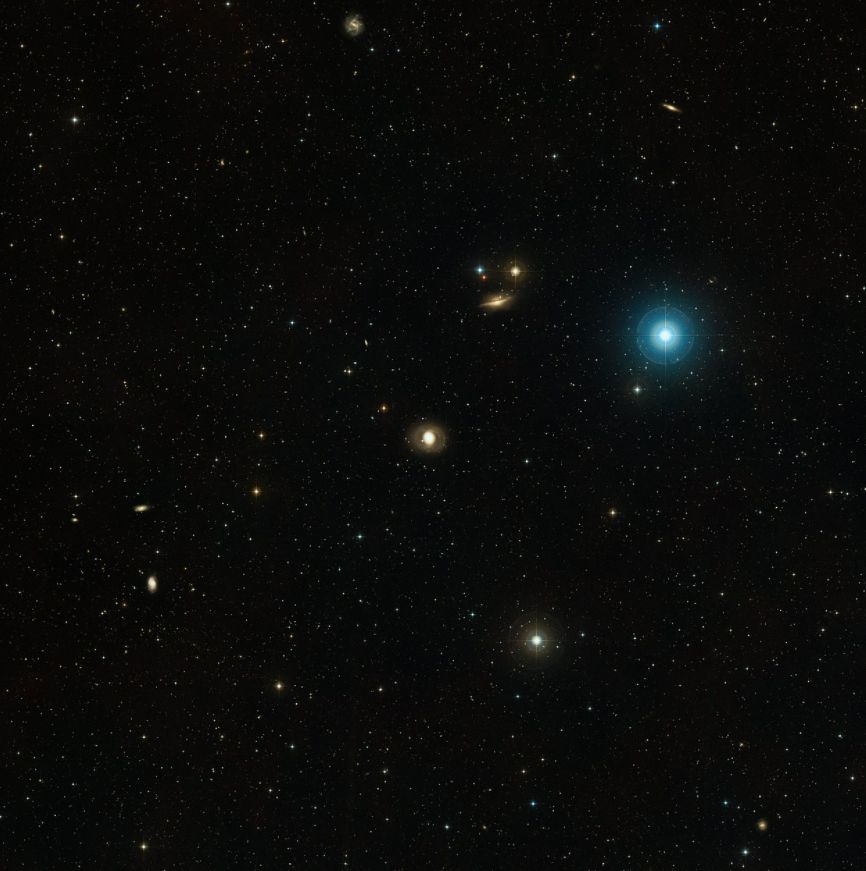
Any differences in appearance between AGNs, according to this hypothesis, are due to the angle at which we observe the black hole and its thick ring from Earth. The type of AGN we see is determined by how much the ring obscures the black hole from our perspective, sometimes entirely hiding it.
Astronomers had already discovered evidence to support the Unified Model, such as warm dust near the center of Messier 77. However, questions remained regarding whether this dust could totally conceal a black hole and hence explain why this AGN flashes in visible light less brilliantly than others.
“The real nature of the dust clouds and their role in both feeding the black hole and determining how it looks when viewed from Earth have been central questions in AGN studies over the last three decades,” says Gámez Rosas. “Whilst no single result will settle all the questions we have, we have taken a major step in understanding how AGNs work.”
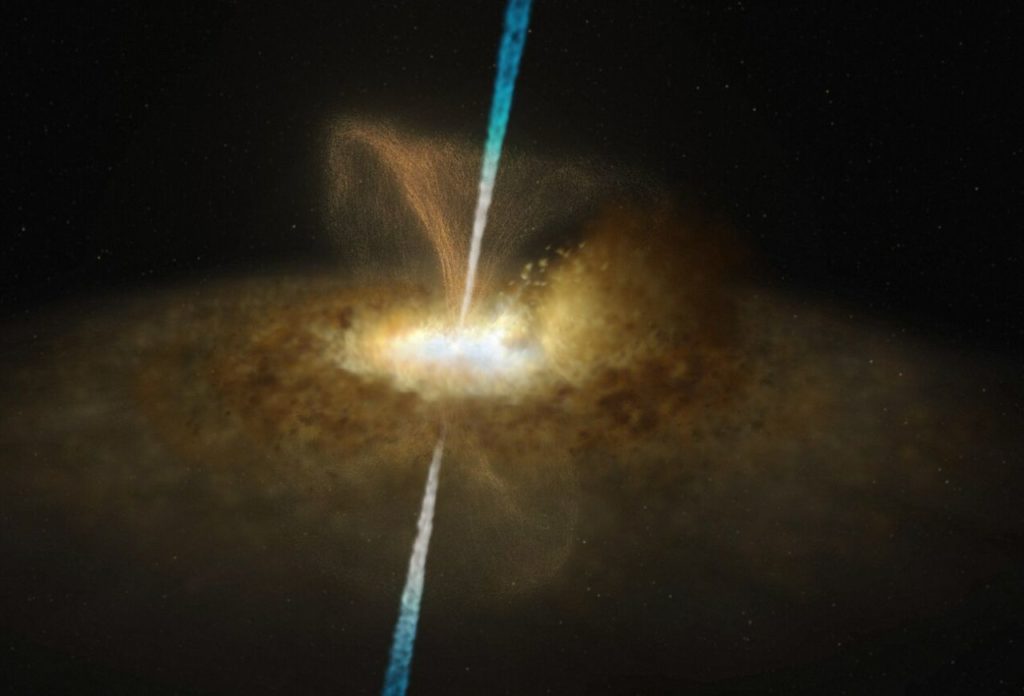
The observations were made possible by the Multi AperTure mid-Infrared SpectroScopic Experiment (MATISSE), which is placed on ESO’s VLTI in the Atacama Desert of Chile. MATISSE used interferometry to integrate infrared light gathered by all four 8.2-meter telescopes of ESO’s Very Large Telescope (VLT). The scientists utilized MATISSE to scan the center of Messier 77 in the constellation Cetus, which is 47 million light-years away.
“MATISSE can see a broad range of infrared wavelengths, which lets us see through the dust and accurately measure temperatures. Because the VLTI is in fact a very large interferometer, we have the resolution to see what’s going on even in galaxies as far away as Messier 77. The images we obtained detail the changes in temperature and absorption of the dust clouds around the black hole,” adds co-author Walter Jaffe, a professor at Leiden University.
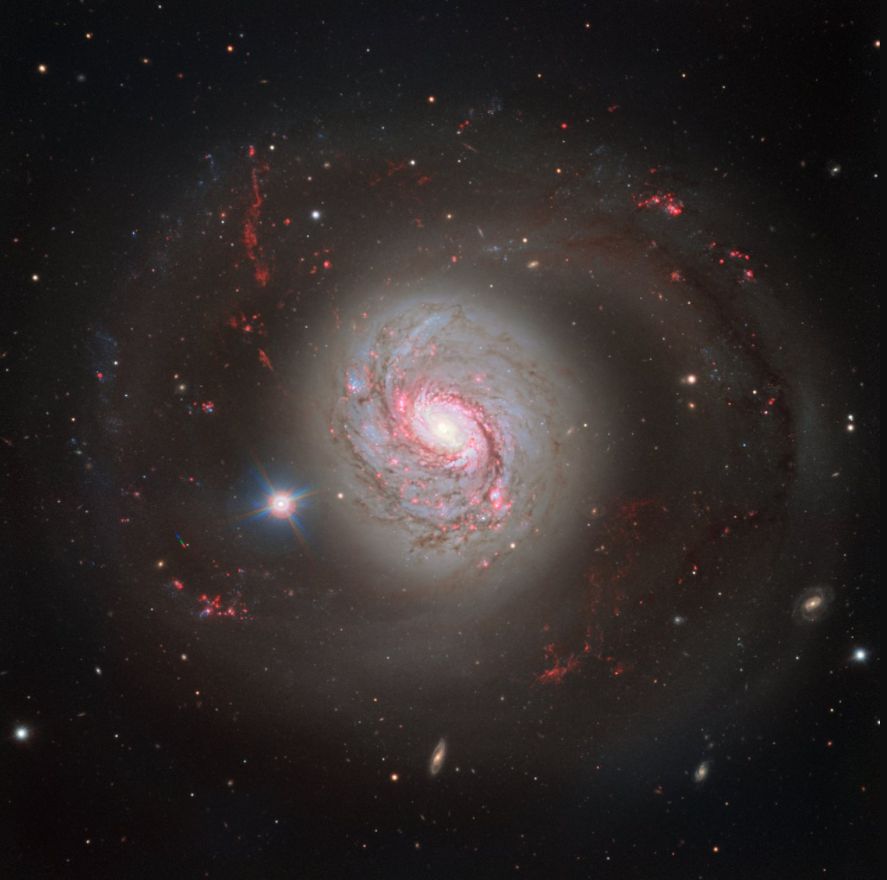
The scientists created a precise picture of the dust and determined where the black hole must be by combining fluctuations in dust temperature (from around room temperature to around 1200 °C) caused by the intense radiation from the black hole with the absorption maps. The dust, in the form of a thick inner ring and a larger disc, with the black hole at its center, lends credence to the Unified Model. The scientists also used data from the ESO-owned Atacama Large Millimeter/submillimeter Array and the National Radio Astronomy Observatory’s Very Long Baseline Array to create their image.
“Our results should lead to a better understanding of the inner workings of AGNs,” concludes Gámez Rosas. “They could also help us better understand the history of the Milky Way, which harbours a supermassive black hole at its centre that may have been active in the past.”
Source: 10.1038/s41586-021-04311-7
Image Credit: ESO/Jaffe, Gámez-Rosas et al.
You were reading: Supermassive black hole hiding in a doughnut of cosmic dust confirms 30-yr-old theory
